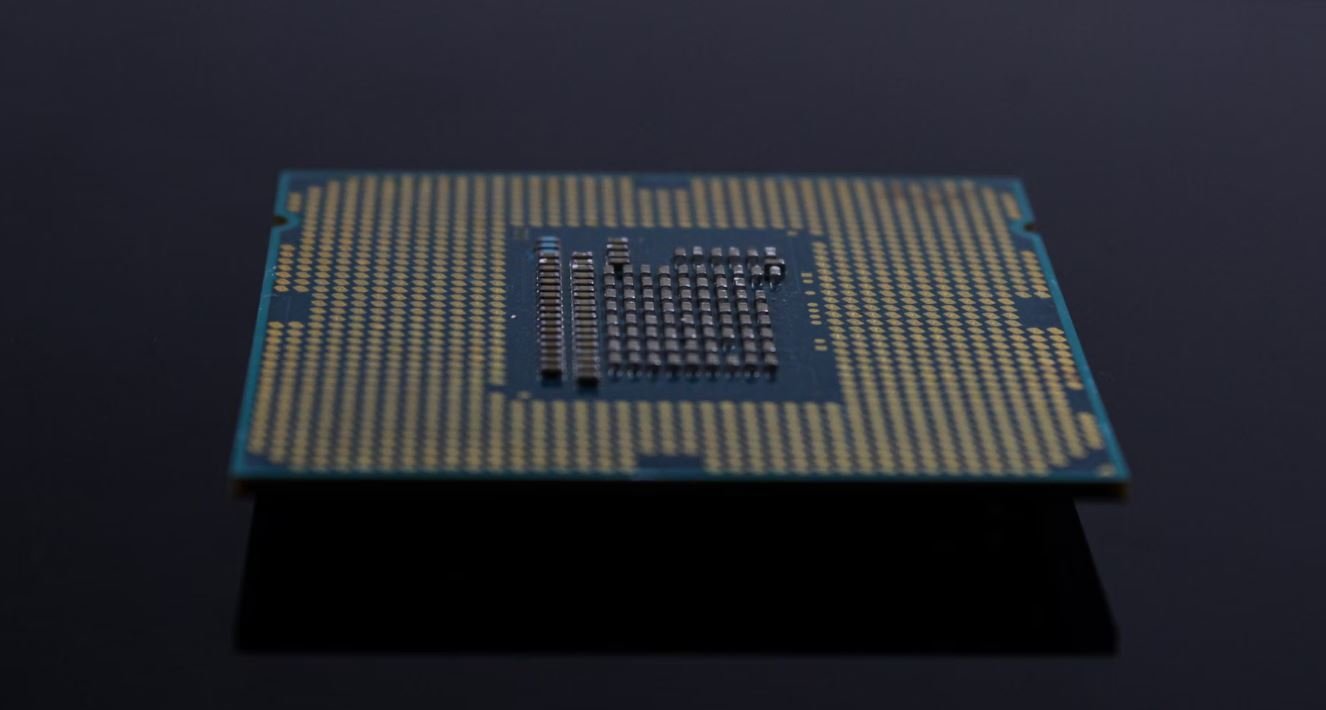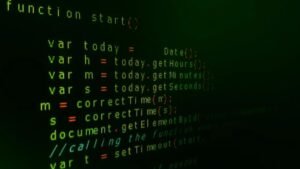Deep Learning Ki
Deep learning is a subset of machine learning that uses artificial neural networks to model and understand complex patterns and relationships. It has gained significant attention in recent years due to its ability to analyze large amounts of data and make accurate predictions. This article explores the key concepts and applications of deep learning.
Key Takeaways:
- Deep learning is a subset of machine learning that uses artificial neural networks.
- It is capable of analyzing large amounts of data and making accurate predictions.
- Deep learning has applications in various fields such as computer vision, natural language processing, and speech recognition.
- Training deep learning models requires a substantial amount of labeled data and computational resources.
Understanding Deep Learning
Deep learning involves the use of artificial neural networks with multiple layers to learn and represent complex patterns in data. *This approach enables the model to automatically extract relevant features from raw input data, eliminating the need for manual feature engineering.* Deep learning models are typically trained using large datasets and can be divided into two main categories:
- Supervised Learning: In this approach, the model learns from labeled examples to make predictions or classify new data.
- Unsupervised Learning: Here, the model learns patterns and structures in unlabeled data without specific guidance.
Applications of Deep Learning
Deep learning has witnessed remarkable success in various domains, contributing to advancements in multiple fields. Some notable applications include:
- Computer Vision: Deep learning algorithms have revolutionized computer vision by enabling accurate object detection, image recognition, and facial recognition.
- Natural Language Processing: Deep learning models have improved language translation, sentiment analysis, and text generation tasks.
- Speech Recognition: Technologies like voice assistants and speech-to-text software heavily rely on deep learning techniques to understand and process spoken language.
Data and Computational Requirements
Deep learning models are data-hungry and computationally intensive. To achieve good performance, they often require large labeled datasets for training. Additionally, training deep learning models necessitates significant computational resources, often utilizing powerful GPUs for faster processing. As a result, deep learning can be resource-intensive and may require specialized hardware or cloud-based solutions to handle the computational demands.
Data and Computational Requirements
| Deep Learning Framework | Year | Usage |
|---|---|---|
| TensorFlow | 2015 | Widely used for deep learning research and production deployment. |
| PyTorch | 2016 | Popular for its dynamic computational graph, making it more suitable for research and prototyping. |
| Keras | 2015 | High-level API often used for rapid prototyping and beginners. |
Deep learning frameworks provide developers with pre-built tools and libraries to easily build, train, and deploy deep learning models. *These frameworks greatly simplify the process of developing complex neural networks, speeding up research and implementation.* Some commonly used deep learning frameworks include TensorFlow, PyTorch, and Keras. Each framework offers unique features and advantages, catering to different use cases and preferences.
Challenges and Future Developments
While deep learning has achieved impressive results in various domains, it also faces certain challenges and limitations. These include:
- Interpretability: Deep learning models can be difficult to interpret, making it challenging to understand the reasoning behind their predictions.
- Data Quality and Bias: The performance of deep learning models heavily relies on the quality and representativeness of the training data. Biased or limited datasets may result in biased or suboptimal models.
- Computational Demands: Training large deep learning models requires substantial computational resources, hindering accessibility for researchers and practitioners with limited hardware capabilities.
| Domain | Interesting Data Point |
|---|---|
| Healthcare | Deep learning models have demonstrated high accuracy in detecting diabetic retinopathy from retinal images. |
| Automotive | Deep learning algorithms are used in autonomous vehicles for object detection and driving decision-making. |
| Finance | Deep learning models have been successful in fraud detection and predicting stock market trends. |
As deep learning research progresses, there are ongoing efforts to address these challenges and improve the capabilities of deep learning models. Future developments may include enhanced interpretability techniques, increased focus on data ethics to minimize bias, and advancements in hardware and software infrastructure to support more efficient and accessible computing.

Common Misconceptions
Paragraph 1
One common misconception about deep learning is that it is a form of artificial intelligence (AI) that is capable of thinking and reasoning like a human.
- Deep learning is a subset of AI and focuses on training neural networks using large amounts of data.
- While deep learning can achieve impressive results, it lacks consciousness and cannot think or reason like humans.
- Deep learning relies on mathematical algorithms and statistical techniques to make predictions based on patterns in the given data.
Paragraph 2
Another misconception is that deep learning algorithms always outperform traditional machine learning algorithms in every scenario.
- While deep learning has achieved breakthroughs in certain domains, it is not always the best choice for every problem.
- Deep learning requires large amounts of labeled data for training, which may not be available in some cases.
- In scenarios where data is limited or the problem is well-defined, traditional machine learning algorithms can be more effective and efficient.
Paragraph 3
Some people believe that deep learning models are always accurate and robust.
- Deep learning models can produce highly accurate results when trained on extensive and reliable datasets.
- However, they are also susceptible to overfitting, where the model performs well on training data but fails to generalize to new, unseen data.
- Deep learning models require careful tuning, regularization techniques, and validation to ensure both accuracy and robustness.
Paragraph 4
There is a misconception that deep learning can solve any problem without human intervention.
- While deep learning can automate certain tasks and provide valuable insights, it still requires human intervention for its development, monitoring, and interpretation.
- Human experts are needed to curate and label the training data, design the architecture of the neural networks, and interpret the output of the models.
- Deep learning should be seen as a tool that complements human expertise, rather than a replacement for human intelligence.
Paragraph 5
Finally, there is a misconception that deep learning is only useful in the field of computer vision.
- While deep learning has made significant advancements in computer vision applications, it can also be applied to a wide range of domains such as natural language processing, speech recognition, and finance.
- Deep learning techniques have revolutionized areas like language translation, sentiment analysis, and voice assistants.
- By leveraging the power of deep learning, various industries can benefit from improved decision-making and automation.

Introduction to Deep Learning
Deep learning is a branch of machine learning that focuses on the development of artificial neural networks inspired by the human brain. These networks are capable of learning and making intelligent decisions based on large amounts of data. In recent years, deep learning has gained significant attention and has been successfully applied in various fields such as computer vision, natural language processing, and predictive analytics. In this article, we explore ten interesting aspects of deep learning through illustrative tables.
Table: Comparison of Deep Learning Frameworks
Deep learning frameworks provide tools and libraries that enable the development and deployment of deep neural networks. The table below compares some popular frameworks based on factors like ease of use, community support, and performance.
| Framework | Ease of Use | Community Support | Performance |
|—————-|————-|——————|————-|
| TensorFlow | High | High | Excellent |
| PyTorch | Medium | High | Good |
| Keras | High | Medium | Good |
| Caffe | Low | Medium | Moderate |
| MXNet | Medium | Medium | Excellent |
Table: Deep Learning Applications in Healthcare
Deep learning has made remarkable contributions to the healthcare industry, improving diagnosis, treatment, and patient care. The following table showcases some notable applications of deep learning in healthcare.
| Application | Description |
|——————————-|————————————————————–|
| Medical Image Diagnosis | Automated detection of diseases from medical images |
| Drug Discovery | Identification of potential new drug candidates |
| Predictive Analytics | Forecasting patient outcomes based on data analysis |
| Electronic Health Records | Analysis of patient records to personalize healthcare |
| Medical Research | Assisting medical researchers in data analysis and insights |
Table: Performance Comparison of Deep Learning Models for Image Classification
Deep learning models excel in image classification tasks. The table below compares the performance of different models on benchmark datasets like ImageNet.
| Model | Top-1 Accuracy | Top-5 Accuracy |
|—————–|—————-|—————-|
| ResNet-50 | 76.0% | 93.28% |
| Inception-V3 | 78.8% | 94.39% |
| VGG-16 | 73.6% | 91.58% |
| DenseNet-121 | 75.6% | 92.87% |
| MobileNet-V2 | 71.8% | 91.00% |
Table: Deep Learning Libraries Support for Natural Language Processing
Natural language processing (NLP) has immensely benefited from deep learning techniques. The table presented here summarizes the deep learning libraries and their support for NLP tasks such as sentiment analysis, named entity recognition, and text translation.
| Framework | Sentiment Analysis | Named Entity Recognition | Text Translation |
|—————|——————–|————————–|——————|
| TensorFlow | Yes | Yes | Yes |
| PyTorch | Yes | Yes | No |
| Keras | Yes | No | No |
| SpaCy | No | Yes | No |
| NLTK | Yes | Yes | Yes |
Table: Deep Learning Algorithms Deployment Platforms
Once a deep learning model is developed, deploying it is a crucial step. Different platforms offer various deployment options, as illustrated in the following table.
| Platform | Cloud Deployment | On-Premises Deployment | Edge Device Deployment |
|—————-|——————|————————|————————|
| TensorFlow | Yes | Yes | Yes |
| PyTorch | Yes | No | Yes |
| Keras | Yes | No | No |
| Microsoft Azure| Yes | Yes | Yes |
| AWS SageMaker | Yes | Yes | Yes |
Table: Scalability of Deep Learning Models
Deep learning models can differ greatly in terms of scalability. The table below demonstrates the scalability of some popular models.
| Model | Parameters | Inference Time (ms) |
|—————–|————|———————|
| AlexNet | 61 million | 2.3 |
| BERT | 340 million| 15 |
| GPT-3 | 175 billion| 3000+ |
| EfficientNet | 66 million | 4.3 |
| U-Net | 31 million | 10 |
Table: Deep Learning Impact on Automated Driving
Deep learning plays a crucial role in advancing the field of automated driving. The table showcases the impact of deep learning in various aspects of autonomous vehicles.
| Aspect | Impact |
|—————————-|————————————————————-|
| Object Detection | Accurate and real-time detection of objects on the road |
| Lane Detection | Precise identification of lanes and road markings |
| Traffic Sign Recognition | Detecting and interpreting traffic signs and signals |
| Path Planning | Predicting safe and efficient paths for the vehicle |
| Pedestrian Detection | Recognizing and avoiding pedestrians on the road |
Table: Deep Learning in Finance
The finance industry has also embraced deep learning for tasks such as risk assessment, fraud detection, and stock market prediction. The table below highlights some applications of deep learning in the financial domain.
| Application | Description |
|————————-|——————————————————————–|
| Credit Scoring | Assessing creditworthiness of individuals and companies |
| Algorithmic Trading | Using deep learning models for high-frequency trading algorithms |
| Fraud Detection | Identifying fraudulent transactions and activities |
| Portfolio Optimization | Optimizing investment portfolios based on risk and return |
| Time Series Forecasting | Predicting and analyzing financial market trends |
Table: Deep Learning Frameworks Supported Hardware
Deep learning frameworks are designed to efficiently utilize hardware resources. The table below summarizes the hardware support offered by various frameworks.
| Framework | CPU Support | GPU Support | TPU Support |
|—————-|————-|————-|————-|
| TensorFlow | Yes | Yes | Yes |
| PyTorch | Yes | Yes | No |
| Keras | Yes | Yes | No |
| Caffe | Yes | Yes | No |
| MXNet | Yes | Yes | Yes |
Conclusion
Deep learning has revolutionized the field of machine learning, enabling significant advancements across numerous domains. Through this article, we have explored various aspects of deep learning, from its applications in healthcare and finance to its impact on automated driving. Additionally, we have highlighted factors such as framework performance, algorithm scalability, and hardware support. As deep learning continues to evolve, its potential to tackle complex problems and improve decision-making processes is truly exciting.
Frequently Asked Questions
What is deep learning?
Deep learning is a subfield of machine learning that focuses on using artificial neural networks to model and understand complex patterns and relationships in data. It involves training deep neural networks with multiple layers to learn representations of data and make predictions or decisions.
How does deep learning work?
Deep learning algorithms work by iteratively optimizing the weights and biases of artificial neural networks through a process called backpropagation. This involves feeding training data into the network, computing the errors between the predicted outputs and the actual outputs, and then adjusting the network parameters to minimize the errors.
What are the applications of deep learning?
Deep learning has been successfully applied in various domains, including computer vision (object recognition, image classification), natural language processing (speech recognition, language translation), and even in fields like healthcare (disease diagnosis, drug discovery) and finance (stock market prediction, fraud detection).
What are the advantages of deep learning?
Some of the advantages of deep learning include its ability to automatically learn useful features from raw data, its capability to handle large and complex datasets, its potential for achieving state-of-the-art performance in various tasks, and its flexibility to be applied to different domains.
What are the limitations of deep learning?
Deep learning models often require a large amount of annotated training data to achieve good performance. They can be computationally expensive to train and may require specialized hardware or high-performance computing resources. Additionally, understanding and interpreting the decisions made by deep learning models can be challenging due to their complex nature.
What are the key components of a deep learning system?
A typical deep learning system comprises an input layer, multiple hidden layers, and an output layer. Each layer consists of multiple neurons, and the connections between neurons are weighted. Deep learning models also incorporate activation functions, regularization techniques, and optimization algorithms to improve the learning process and model performance.
What are neural networks?
Neural networks are computational models inspired by the structure and functioning of the human brain. They consist of interconnected artificial neurons organized in layers, with each neuron applying a mathematical operation to its inputs and producing an output. Neural networks are the building blocks of deep learning models.
What is the difference between deep learning and machine learning?
Deep learning is a subset of machine learning that focuses on training deep neural networks with multiple layers, while machine learning encompasses a broader range of techniques that include shallow learning models, such as decision trees and support vector machines. Deep learning models are known for their ability to automatically learn hierarchical representations of data.
Do I need a lot of programming knowledge to work with deep learning?
While having programming knowledge is certainly beneficial when working with deep learning, it is not mandatory. There are several high-level deep learning libraries and frameworks, such as TensorFlow and PyTorch, that provide user-friendly APIs and can be used with relatively minimal programming skills. However, a solid understanding of basic concepts and algorithms in machine learning is recommended to effectively work with deep learning models.
What are some resources to learn more about deep learning?
There are numerous online resources available to learn more about deep learning, including online courses, tutorials, blogs, research papers, and open-source code repositories. Some popular online platforms for deep learning education include Coursera, Udacity, and Stanford University’s CS231n course. It is advisable to explore multiple resources and gain hands-on experience through practice and experimentation.




